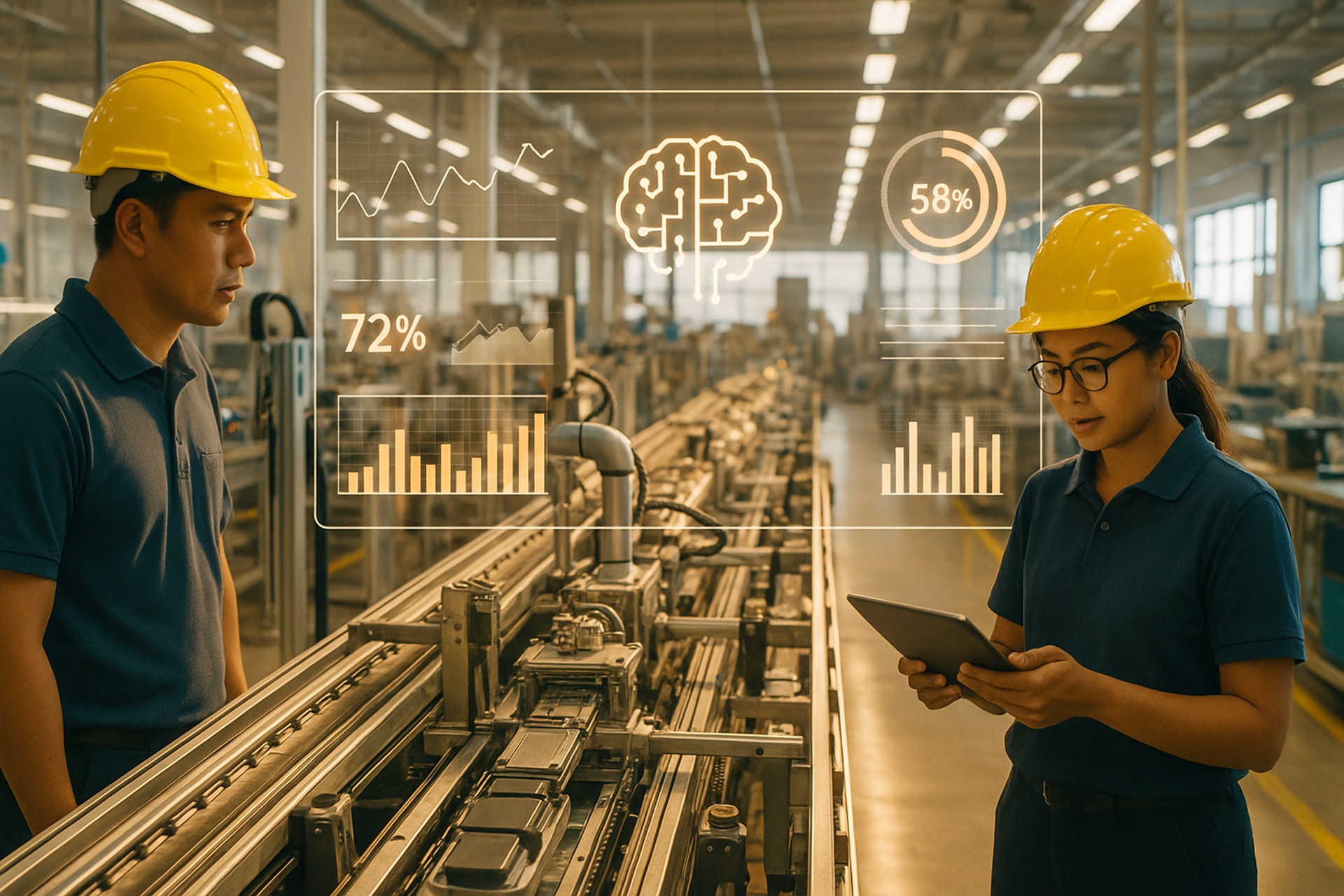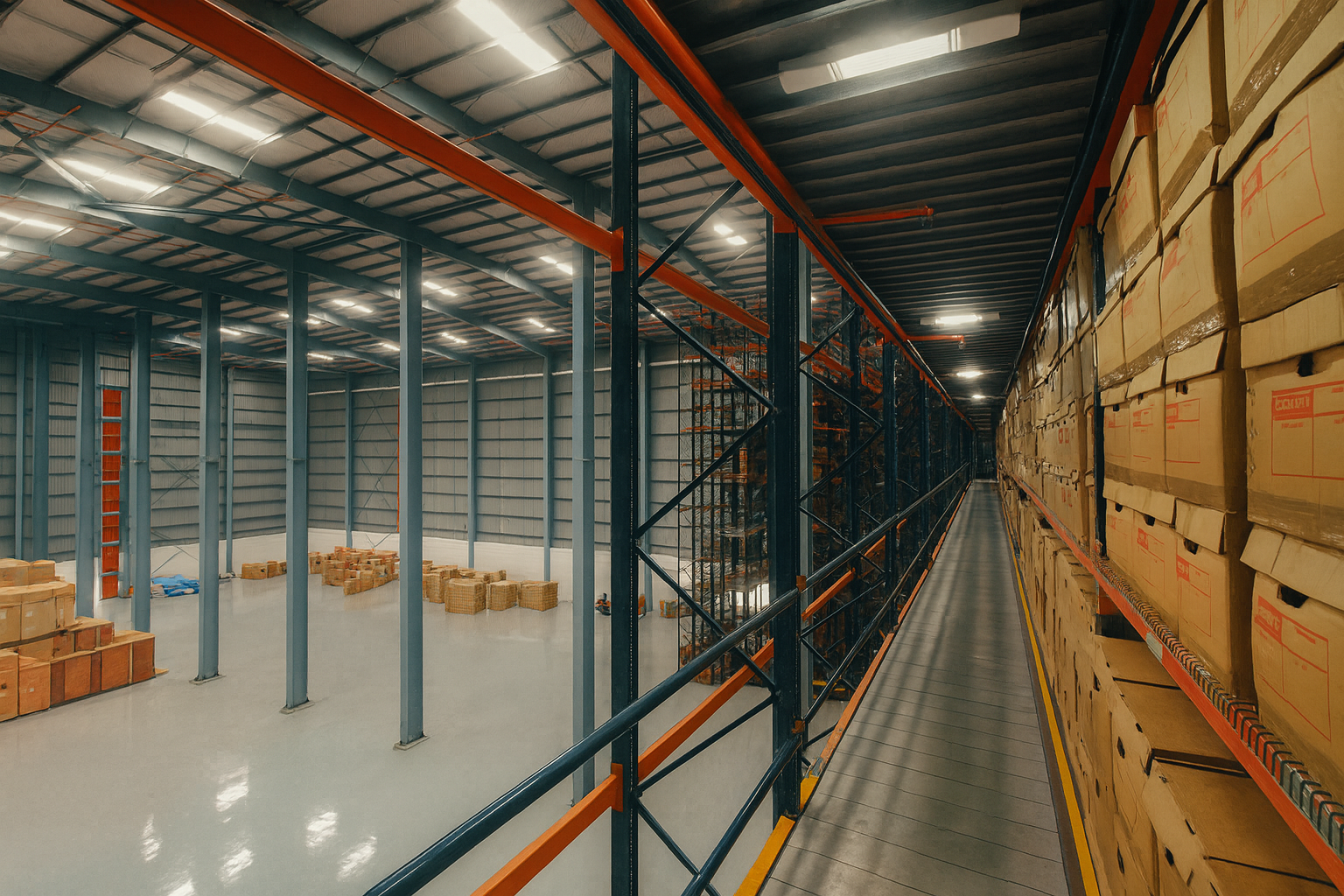For many factory owners, the question is no longer whether Artificial Intelligence (AI) can
make a difference, it’s how fast they can bring it into their operations. Across Malaysia,
manufacturers face the same pressures: rising labour costs, shortage of skilled workers,
inconsistent quality, and tight delivery timelines. AI offers a practical way to turn those
challenges into competitive advantages.
In this article, we explore why AI adoption makes business sense, what kind of impact it
delivers, and how decision makers can start small without risking disruption.
AI Is No Longer a Future Investment, It’s a Present Advantage
Manufacturing is changing faster than ever. Global supply chains are volatile, customer
expectations are rising, and operational inefficiencies are no longer tolerated. The
Industry4WRD policy, Malaysia’s national roadmap for smart manufacturing, was
introduced to help local factories modernize and remain globally competitive.
But despite incentives and awareness, adoption is still slow. Many factory owners assume
AI is too complex or too expensive. The reality is that today’s AI tools are more affordable,
modular, and easier to integrate than ever before.
Factories that take the first step now are already reaping measurable results: higher
throughput, fewer breakdowns, and better quality. Those who wait risk falling behind peers
who are learning, adapting, and compounding efficiency gains every quarter.
The Measurable Impact: Productivity, Cost, and ROI
Decision makers want outcomes, not buzzwords. Fortunately, AI delivers results that can be
measured directly on the balance sheet.
- Productivity Gains – AI helps optimize production schedules, minimize idle time, and
balance workloads between machines and shifts. Many manufacturers report a 5–20%
increase in throughput within the first year of implementation. - Reduced Downtime – Predictive maintenance powered by sensors and AI models can
detect early signs of wear, vibration, or overheating. Preventing a single unplanned
shutdown can save tens of thousands of ringgit. - Lower Scrap & Rework Costs – AI vision systems catch defects early, reducing waste and
improving yield. This improves customer satisfaction while lowering warranty claims. - Energy Efficiency – AI can monitor real-time energy consumption and automatically
optimize machine usage, cutting electricity costs by 10–15% in some factories.
Most importantly, these improvements come without massive capital expenditure. Instead
of buying new machines, AI extracts more value from what you already own in a smarter,
leaner way to scale.
From Gut Feel to Data-Driven Decisions
Many factory leaders rely on experience and intuition. While this approach has worked for
decades, today’s environment demands real-time data visibility and precision.
AI systems collect and interpret data from multiple sources production lines, quality checks,
maintenance logs, even supplier performance and transform them into actionable insights.
For example:
- Managers can view live dashboards showing machine utilization and bottlenecks.
- Quality teams can analyze which product variants cause the most rework.
- Maintenance staff can plan interventions based on predicted failure probabilities, not
guesswork.
This level of insight empowers decision makers to act quickly and accurately reducing
human error and improving accountability across departments.
Competing on Intelligence, Not Just Cost
In the past, Malaysian manufacturers competed mainly on cost and capacity. But global
competition is shifting the playing field toward agility and intelligence. Customers and
OEMs increasingly prefer partners who can guarantee consistent quality, transparency, and
delivery accuracy.
AI enables this differentiation.
Factories that adopt it early enjoy:
- Higher customer trust, through data-backed reliability
- Better contract terms, due to consistent quality performance
- Faster turnaround, supported by predictive planning and reduced downtime
Meanwhile, competitors that delay adoption will soon face lower margins and tougher
negotiations as buyers prefer AI-enabled suppliers who can prove reliability through data.
AI Adoption in Malaysia: The Window of Opportunity
Malaysia is uniquely positioned to benefit from AI in manufacturing. According to MIDA, the
manufacturing sector contributes over 23% of national GDP and 65% of exports, making it
one of the largest economic pillars. Yet, many SMEs still rely on manual record keeping and
isolated automation systems.
The Industry4WRD Readiness Assessment program and grants from SME Corp Malaysia
offer financial support for companies starting their AI journey. These include funding for
sensors, software integration, and training helping manufacturers modernize with reduced
financial risk.
The opportunity is clear: by leveraging these incentives now, factories can achieve early
gains while competitors are still evaluating their options.
Getting Started: Start Small, Scale Fast
The most effective way to implement AI isn’t through a massive digital overhaul it’s through
focused pilot projects.
Start with one problem that directly impacts cost or downtime:
- A high-value machine that frequently breaks down
- A production line with quality issues
- A process with high manual record-keeping errors
Once you prove ROI on a small scale, scaling to other lines or facilities becomes easier and
more cost-efficient.
Partnering with an experienced integrator also shortens the learning curve. The right
partner will help connect your machines, clean up your data, and implement AI tools that
deliver tangible business results.
Conclusion: The Smart Factory Starts with Smart Decisions
The factories of the future won’t necessarily be bigger they’ll be smarter.
AI gives Malaysian manufacturers the opportunity to compete globally not by lowering
prices, but by increasing efficiency, quality, and reliability.
Decision makers who act now can future proof their operations, increase margins, and build
stronger relationships with customers. The technology is ready. Incentives are available.
The only question left is when will you start?
At Ocunapse, we help manufacturers in Malaysia transition from traditional operations to
smart, data-driven factories. Whether it’s predictive maintenance, process optimization, or
AI-enabled quality control, we build solutions that deliver measurable business impact.
Learn more at https://www.ocunapse.com/article/
References
- Malaysian Investment Development Authority (MIDA). (2023). Malaysia Manufacturing
Sector Overview. Retrieved from https://www.mida.gov.my/ - Ministry of International Trade and Industry (MITI). (2018). Industry4WRD: National
Policy on Industry 4.0. Kuala Lumpur: MITI. - SME Corporation Malaysia. (2023). Industry4WRD Readiness Assessment Programme.
Retrieved from https://www.smecorp.gov.my/ - McKinsey & Company. (2021). The State of AI in Manufacturing: Global Insights on
Adoption and ROI. - Ocunapse. (2025). The Business Impact of AI: Why It Matters to Decision Makers.
Retrieved from https://www.ocunapse.com/article/








